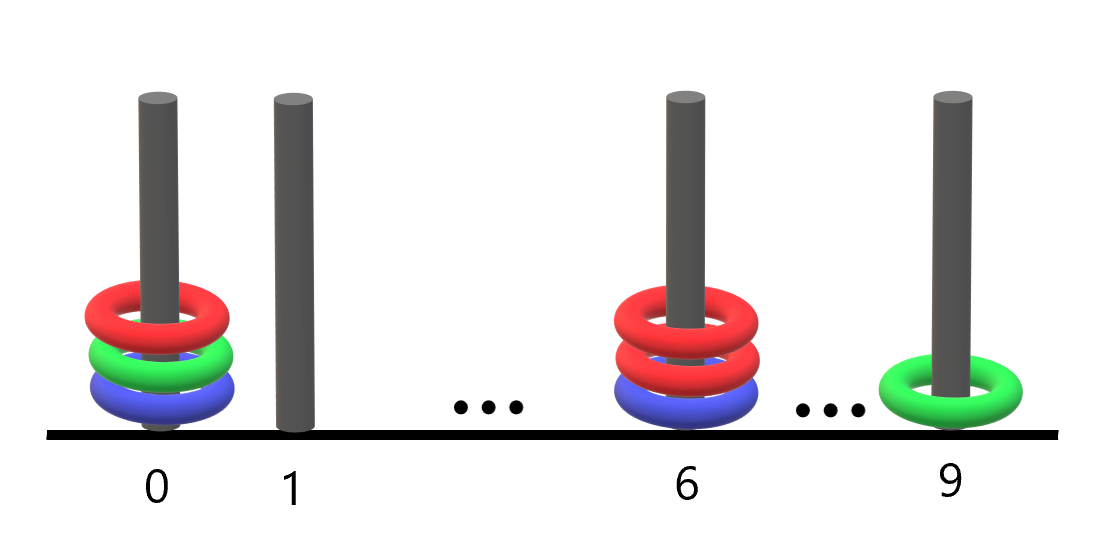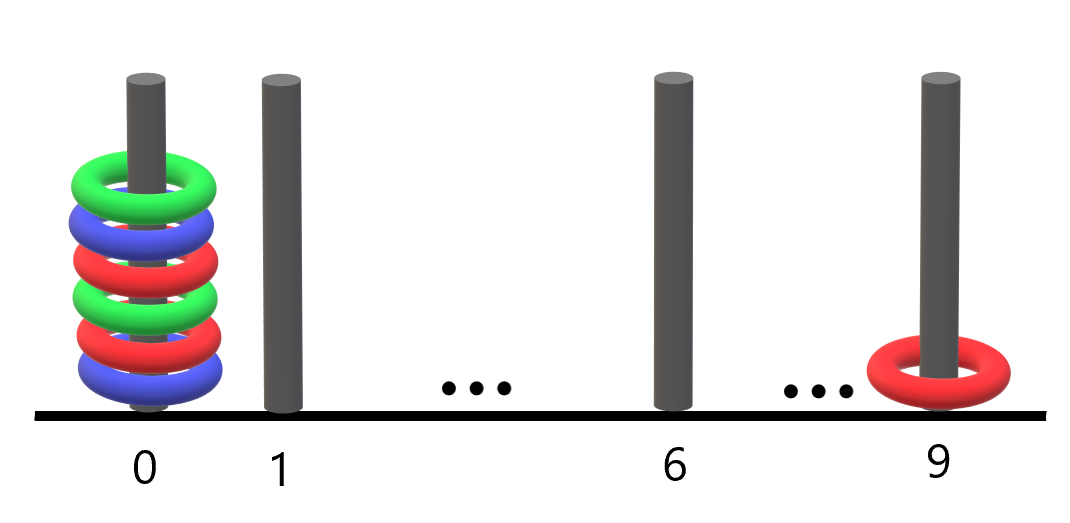There are n rings and each ring is either red, green, or blue. The rings are distributed across ten rods labeled from 0 to 9.
You are given a string rings of length 2n that describes the n rings that are placed onto the rods. Every two characters in rings forms a color-position pair that is used to describe each ring where:
ith pair denotes the ith ring's color ('R', 'G', 'B').ith pair denotes the rod that the ith ring is placed on ('0' to '9').For example, "R3G2B1" describes n == 3 rings: a red ring placed onto the rod labeled 3, a green ring placed onto the rod labeled 2, and a blue ring placed onto the rod labeled 1.
Return the number of rods that have all three colors of rings on them.
Example 1:

Input: rings = "B0B6G0R6R0R6G9" Output: 1 Explanation: - The rod labeled 0 holds 3 rings with all colors: red, green, and blue. - The rod labeled 6 holds 3 rings, but it only has red and blue. - The rod labeled 9 holds only a green ring. Thus, the number of rods with all three colors is 1.
Example 2:

Input: rings = "B0R0G0R9R0B0G0" Output: 1 Explanation: - The rod labeled 0 holds 6 rings with all colors: red, green, and blue. - The rod labeled 9 holds only a red ring. Thus, the number of rods with all three colors is 1.
Example 3:
Input: rings = "G4" Output: 0 Explanation: Only one ring is given. Thus, no rods have all three colors.
Constraints:
rings.length == 2 * n1 <= n <= 100rings[i] where i is even is either 'R', 'G', or 'B' (0-indexed).rings[i] where i is odd is a digit from '0' to '9' (0-indexed).